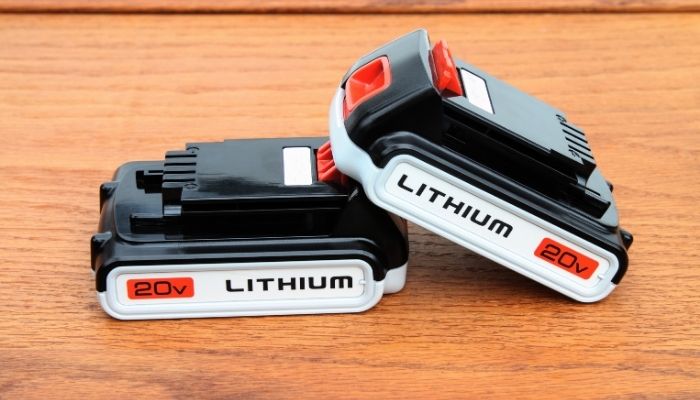The number of products that nowadays use batteries is quite extensive. Vehicles, ships, solar backup energy systems, cellphone applications, kid’s toys, cordless drills, heated gear (ex. winter jackets), etc. are just some of the many examples.
The amount of energy a battery can store, its size, how fast it can be charged and discharged for its intended application, and the environment in which it will operate are some of the main parameters to consider when designing batteries, to avoid possible explosions, and damages to people or property.
Vibration, pressure, and temperature can modify the stability and performance of batteries. Therefore, it is important to take the proper measures to preserve them under extreme environmental conditions, especially during transportation or when used for industrial applications.
The design and chemistry of a battery are important aspects of the product’s stability and performance, requiring manufacturers to have a proper Quality Management System (QMS) in place, to ensure the quality of the product as well as the assembly of the components and the traceability and quality of the supplied raw materials.
Trying to avoid potentially dangerous conditions?
The ISO 9000 series of standards is a good start for manufacturers looking forward to avoiding potentially dangerous conditions due to chemical composition variance, re-calls, and associated costs.
There are different types of batteries applications available in the industry. Some manufacturers only produce them as a component, some as battery cells or pouches, and others integrate them into battery packs.
However, some go beyond this scope and put it all together, integrating it all into one fully assembled product: a battery pack with its own management system and additional critical components. This is commonly seen in the marine industry, although additional rules and standards apply in this case.
Several standards are available for the evaluation of batteries. The following are some examples of standards used for Lithium batteries: UL 1642; UL 2054; UL 62133-2; UN 38.3.

Lithium batteries
UL 1642 and UL 2054
Battery evaluation requires for each component to be already approved before the whole battery pack can be certified.
In the United States, two standards are commonly used for the evaluation of lithium batteries: UL 1642, the standard for Lithium Batteries, and UL 2054, Standard for Household and Commercial Batteries, (UL 2054 refers to UL 1642 testing required for cells).
End devices (host products) standards require battery packs to comply with UL 2054. Some of the tests required by these standards are: Short-Circuit Test (20 and 55°C), abnormal charging, abusive overcharge, forced-discharge, limited power source test, component/surface temperature test, upper limit charging voltage, 250N steady force, mold stress relief test, drop impact test, enclosure flammability, and construction assembly.
batteries packs
UL 62133-2
Another standard for lithium batteries is UL 62133-2, Secondary Cells and Batteries Containing Alkaline or Other Non-acid Electrolytes (Bi-national with CSA C22.2 NO. 62133-2:20, for Canada).
UL 62133-2 is not equivalent to UL 2054, as UL 2054 requires components that are not UL recognized to be tested under a fault condition, for at least two minutes, while the batteries continue to operate, either loading or charging.
In UL 2054, there are also no trip test limits. IEC, EN, BSEN deviations of UL 62133-2 exist as well and play an important role for manufacturers when determining the intended markets and testing plan.
It is always better to identify the applicable standards in advance, to optimize the testing schedule and execution time.
Tests to which batteries will be subjected under UL 62133-2 are: Vibration, case stress at high ambient temperature, temperature cycling, incorrect installation, external short circuit, free fall, mechanical shock (Crash hazard), thermal abuse (Cells), crushing of cells, overcharge and forced discharge.
UN/DOT 38.3
UN/DOT 38.3 Covers transportation safety testing. Batteries under transportation are exposed to conditions in which they experiment temperature changes, vibration, exposure to short circuit conditions, or material lost due to negative pressure.
In this standard, 8 tests are performed:
- T1: Altitude
- T2: Thermal Test
- T3: Vibration Test
- T4: Shock Test
- T5: Short Circuit Test
- T6: Impact Test (cylindrical cells => 18 mm diameter)
- T7: Overcharge
- T8: Forced Discharged
In conclusion, despite UL 2054, UL 62133-2, and UN 38.3 being all standards used for battery testing and despite being somewhat similar, the evaluation criteria and testing purpose in each one is different.
Since when certifying batteries, each component must be previously approved, for those manufacturers wanting to use batteries as a component in their products, it is important to verify in advance if they will meet the required specifications.
One way to do that is by selecting batteries and energy packs that are already tested and certified.
Organized documentation, as well as the use of previously certified components, speeds up the testing and certification process, which is vital for the product’s launch.
UL 1642
Lithium Batteries
UL 2054
Standard for Household and Commercial Batteries
UL 62133-2 (Binational standard with CSA C22.2 NO. 62133-2:20)
Standard for Safety for Secondary Cells and Batteries Containing Alkaline or Other Non-Acid Electrolytes – Safety Requirements for Portable Sealed Secondary Cells, and for Batteries Made from Them, for Use in Portable Applications – Part 2: Lithium Systems
UN 38.3
UN Transportation tests
At LabTest, we assist battery manufacturers in R&D testing or full certification.







